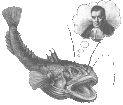UW Aquatic & Fishery Sciences Quantitative Seminar
Ryan Waples
School of Aquatic & Fishery Sciences, University of Washington
Confronting the legacy of the salmonid whole genome duplication: Population genomics of Puget Sound chum salmon
Abstract
The common ancestor of salmonids experienced a whole-genome duplication approximately 100 million years ago. This duplication complicates genetic analyses of salmonids; due to their sequence similarity most methods cannot distinguish between duplicated (paralogous) loci. Paralogous genomic regions are often excluded from analyses, leaving the underlying loci uncharacterized. This exclusion can lead to bias if evolutionary forces, such as selection and genetic drift are different for paralogous regions relative to the rest of the genome. In this talk, I will discuss how to adapt existing genetic methods to better account for the complexity of salmonid genomes and demonstrate how to apply these methods to chum salmon (Oncorhynchus keta) from Puget Sound. I will present a method to resolve confounded paralogous loci by comparing genotypes across many siblings, and use these newly-resolved loci to extend chromosome maps of chum salmon. In wild populations, where it is not possible to collect many siblings, these extended maps allow paralogs to be characterized and incorporated into multivariate analyses describing population genetic structure. We found that paralogous loci are not randomly distributed across chum salmon chromosomes; a majority are clustered in the distal regions of 14 chromosomes, suggesting that a significant fraction of the chum salmon genome may be missed by removing paralogs. In populations of chum salmon from across Puget Sound, we find broadly similar patterns of genetic variation at paralogous and non-paralogous loci, validating that we are observing a true biological signal, and paving the way for more detailed investigations.

